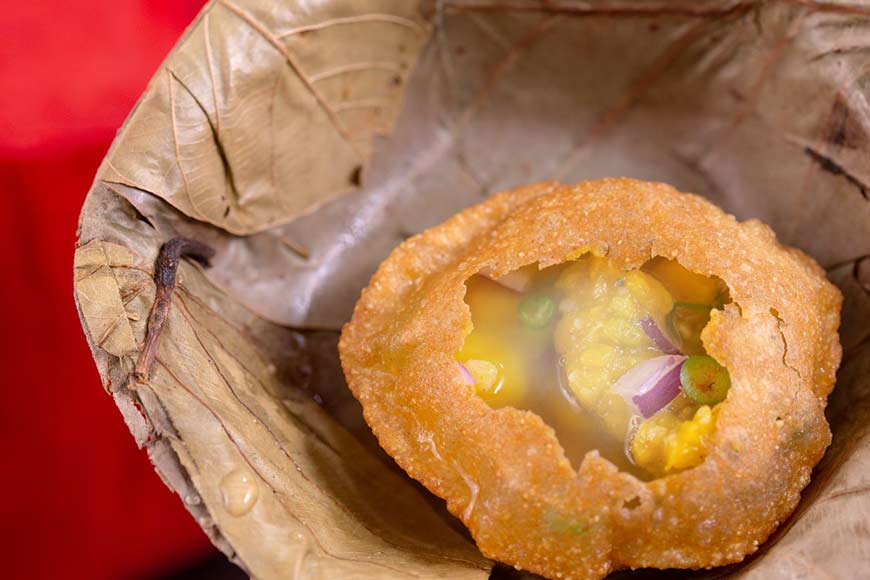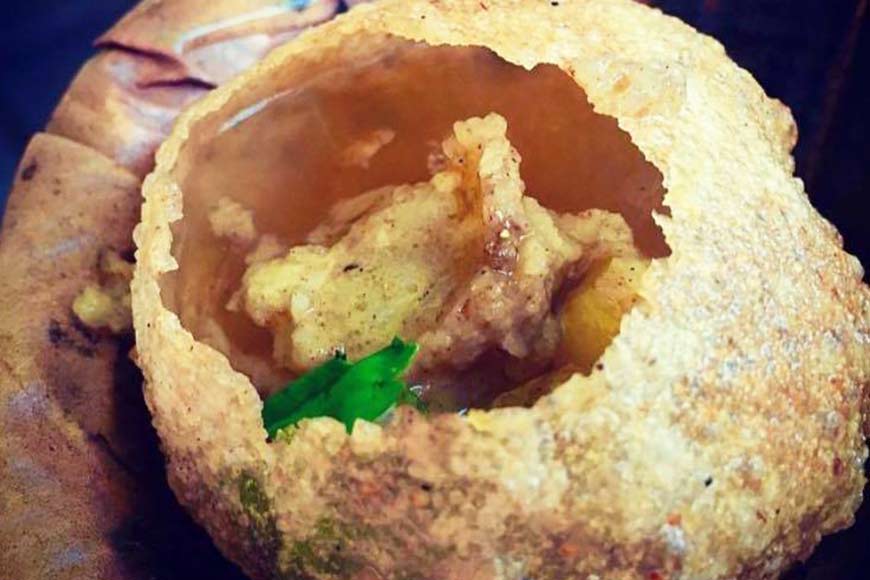Bengal’s favourite Phuchka was introduced by the Magadha dynasty or by Draupadi?

If you have been lately missing the innocuous, small, unassuming, crispy hollow ball of fried dough, filled with a spicy stuffing made out of a potato-chickpea mash dunked in really tangy spicy jal jeera water, liberally infused with mint leaves with a dash of meetha chutney (optional) … well, your favourite phuchka, then here’s a history of how it came to Bengal.
Bengal’s phuchka is unique. You can never compare it with its sisters Gol gappa, pani puri, pani ka pataasha, gup chup, tikki --- similar snacks that one gets in other parts of India. The name of this snack might have been derived from the word ‘phuch,’ the sound it makes when you take a bite. The unique feature of the phuchka lies in the fact that it is made of whole wheat, unlike the other varieties, where the body is made of flour (maida) or semolina (sooji). The phuchka water is also a lot more spicier and tangier than that used in the rest of the country.

The origin of phuchka is mired in mystery. According to a legend, it first came into existence in the ancient Indian kingdom of Magadha. One of the 16 ‘Mahajanapadas’, or ‘Great Kingdoms’, of ancient India, the Kingdom of Magadha corresponded to what is now called South Bihar, that later became part of Bengal residency. While the exact time frame of its existence is unclear, it reportedly existed prior to 600 BCE. Both the Maurya and Gupta Empires had their origins in Magadha, and the region has fostered the birth and development of Jainism, Hinduism, and Buddhism.
Also read : Best Jhaalmuri outlets of Kolkata
Phuchka in Magadha was not exactly the way we have it now. Called ‘phulki ‘(a word still used to refer to phuchka in parts of India today), these ancient ‘phulki’ were made with smaller, crispier puris than those used today. What they were initially filled with is unclear, though it is likely to be some variation of the aloo sabzi. However, as per another legend, Draupadi, wife of the five Pandavas in the Mahabharata, is credited for inventing phuchka. When the Pandava brothers, Draupadi, and their mother Kunti were in exile after losing their kingdom in a game of dice, one day Kunti wanted to test Draupadi’s culinary skills. She gave her some leftover aloo sabzi and a small amount of dough to cook something that would satisfy all five brothers. Draupadi accepted the challenge and invented phuchka! Impressed by her daughter-in-law’s resourcefulness, Kunti blessed the dish with immortality.
Incidentally, phuchka was not a ‘socially acceptable’ street food before Independence in former East Bengal. Those who enjoyed phuchka were snubbed as ‘Ghoti’ but post 1947, we gained freedom from society’s judgmental stance and earned the right to choose and satiate our taste buds according to our fancy. Fusion food made its foray into the gastronomic universe. Epicurean delights were no more taboo. In fact, phuchka is a dish with immense possibilities for experimentation and innovation. In many bars, it is served with Scotch or wine instead of the spicy jal-jeera. Pani-Puri Tequila Shot is another item that’s lapped up by connoisseurs of alcohol.










